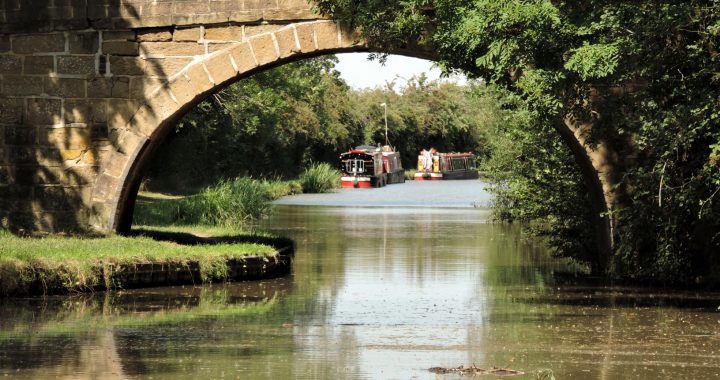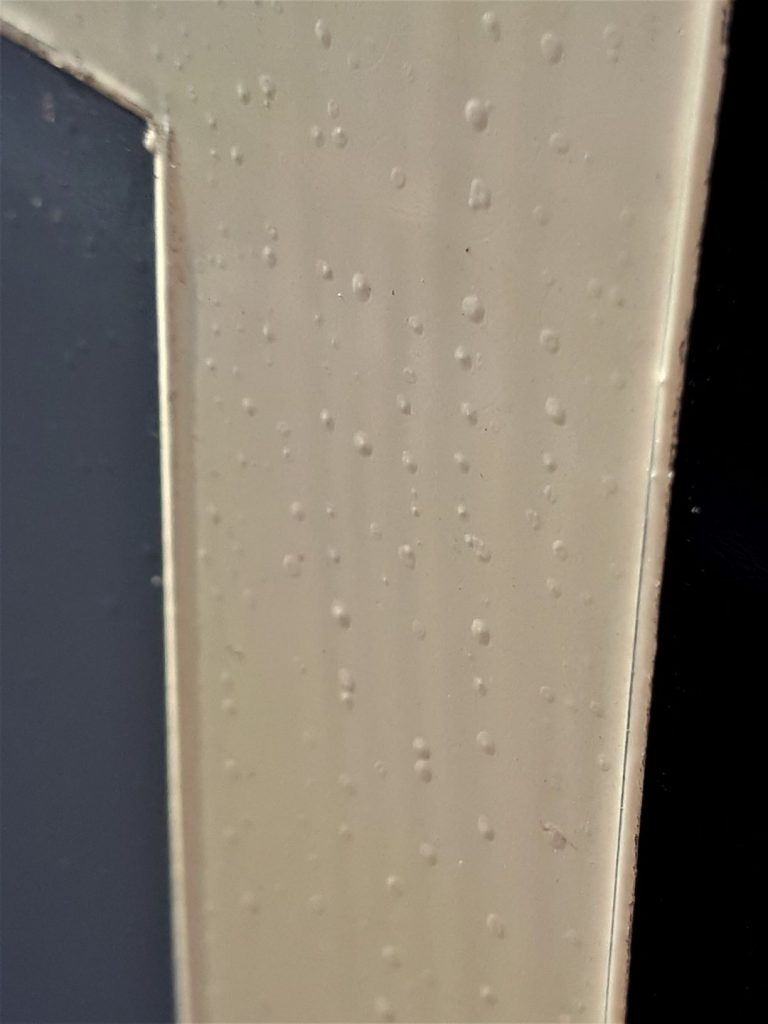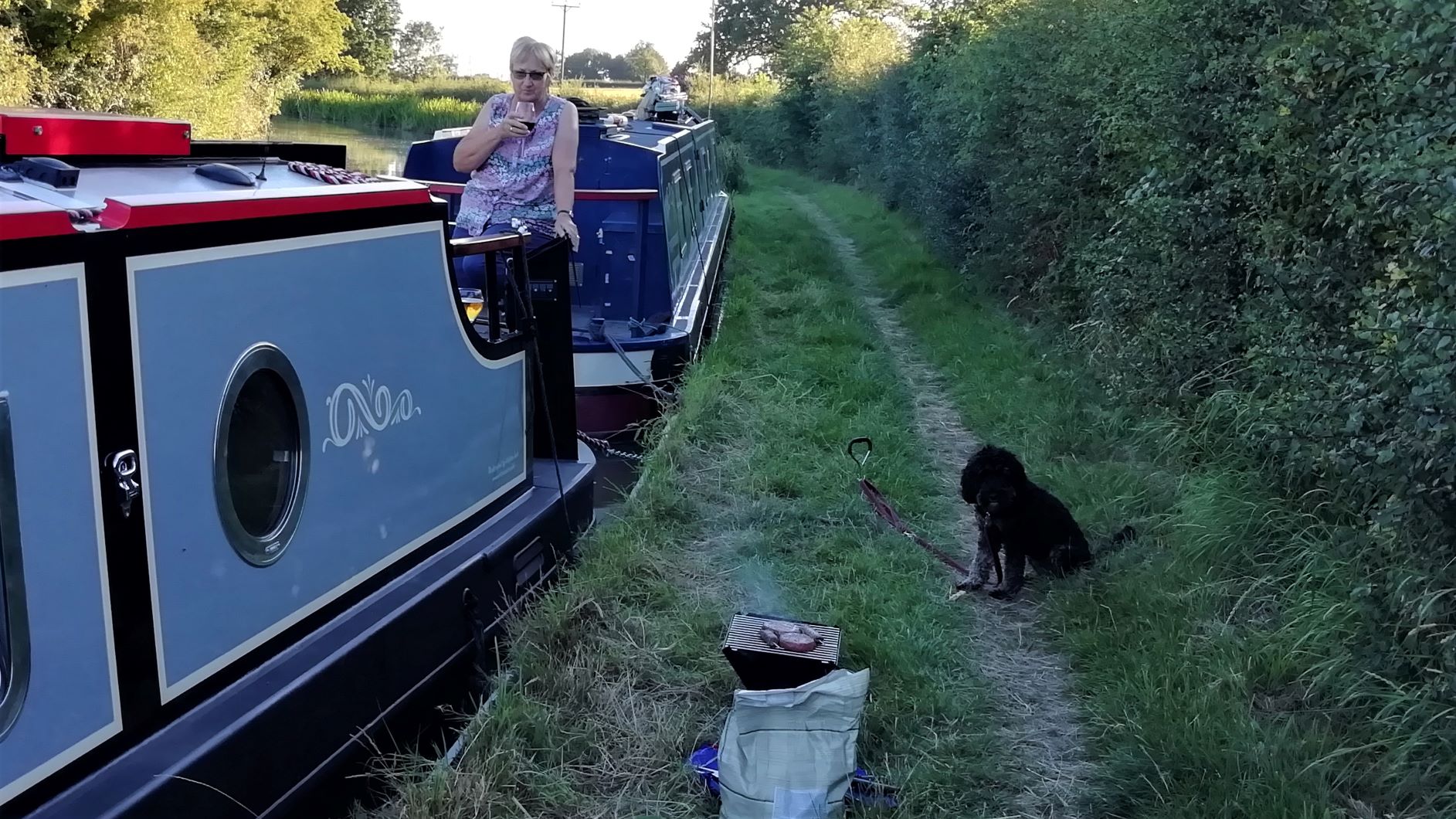Up The Ashby
Notwithstanding the song title, Ashby de la Zouch could not be much further from the sea. Similarly, the Ashby de la Zouch Canal does not go to Ashby de la Zouch and never did.
Originally proposed as a link between the Coventry Canal and the River Trent at Burton Upon Trent, when it was actually built it ran from the Coventry Canal at Marston Junction near Bedworth to Wadlands Wharf near Overseal, five miles west of Ashby de la Zouch. Links to the actual town were operated by tramway to avoid the need for any locks. The whole structure is a contour canal and the only obstacle was a stop lock at the Marston Junction end which normally had no difference in level from the Coventry Canal. The workings for that have since been removed completely.
There must have been ambitions to one day continue the link to the River Trent, as the bridge holes and the Snarestone Tunnel were all built wide enough to accommodate wide barge traffic, although the latter in one-way operation only. That onward link never materialised, however, which meant the canal could only be accessed by narrowboats via the Coventry Canal. The wide stop lock was reduced to narrowboat width in the nineteenth century, so from that point it would have been physically impossible to bring a wide barge through and that unguarded chamber still has to be negotiated today, so the restriction remains.
The original canal was thirty one miles long and primarily served the coalfields at Moira. Eventually, subsidence resulting from extensive mining caused successive sections of the canal to be closed. In the nineteen sixties concern that the rest of the canal would be lost prompted interested enthusiasts to work to save or restore what was left. They have worked hard ever since to ensure it continued to be available and maintained and to add many amenities along its route to attract visitors and supporters. The current navigable section is twenty two miles long and one or two isolated sections have also been reinstated. The next section to be restored has all the necessary funding and permissions in place and they hope to be cruising into Measham in five years time.
Heading North
Entering the canal, with a tight right turn just under a bridge, brings you straight into the narrow chamber of the old stop lock, which is charmingly overgrown, making the concrete sides impossible to see. Once you are through that and can focus on your surroundings it is a little like entering the Welford Arm in that it is narrower than the waterway you have just come from and the bends ahead disappear into lush vegetation. However, this arm is not as close or intimidating and you soon get used to it. The towpath is clear and well marked and there are seats at frequent intervals, each sponsored by supporters of the Ashby Canal.
As there are no more locks, with just one tunnel and one swing bridge right at the far end, together with the fact that the channel itself had wider boats in mind, the expectation is for a trouble free few days without any difficulties. As a contour canal, you naturally expect a lot of bends and that many of the bridges will be blind corners. In this respect it is very like the South Oxford. What we had not been prepared for was the amount of silt below the surface. We had little difficulty in straightforward cruising, although some people were dragging their bottom most of the way up. Where mud banks had built up, particularly where you needed to make way for oncoming boats at a bridge or when passing moorings on narrow stretches, it was quite easy to find yourself unable to steer or even firmly aground. One person we met at Market Bosworth had found it so uncomfortable that he had decided to turn round rather than continue to the end of the line.
We did carry on up to the end but it was certainly disconcerting, when cruising smoothly around the apex of a bend, to find the boat continuing straight on towards the far bank and refusing to answer the tiller at all. At one bridge we backed off into what looked like a handy area of clear water to let someone through but found ourselves propeller deep in the silt. As they passed out of sight and we tried to extricate ourselves a loud bang, followed by unnatural silence, announced that something large had caught in the prop, which cuts off the engine. We were now drifting helplessly in the middle of the canal under a bridge on a blind bend. I managed to shuffle along the boat to jump down onto the bank with a centre line and with help from a passer by, we pulled her in and got her settled against the towpath, so that I could go down the weed hatch and see what had happened. It was almost irritating to find nothing worthwhile there. Whatever the obstruction was must have dropped off of its own accord when the engine stopped, so we could have just restarted it but we couldn't risk trying that without having checked on the cause or we might have done some serious damage.
Timeless Terrain
The Ashby Canal does pass through the outskirts of Hinckley, a large town in theory but then everything is relative. The next largest population centre is probably Market Bosworth. As we found when we moored there, the actual place is a surprisingly long way from the canal and is really only a large village. Otherwise, the landscape through which the navigation passes offers twenty two miles of pastoral English countryside at its best, most appropriately described as 'bucolic'. You pass quietly through a patchwork of mixed arable fields and livestock grazing, interspersed with classic woodland and the odd small village, usually some distance away up a hill. It does feel as though the worst excesses of modern times have passed this area by. As each new scene unfolds the refrain "isn't this lovely" becomes a bit too repetitive and of course, you know you are going to enjoy the same twenty two miles coming back.
One of the main attractions along this route is the Bosworth Battlefield Heritage Centre. This was completely closed until further notice, due to COVID-19 but the outside displays and walks were accessible. We had visited it before, when the most memorable takeaway was that the Battle of Bosworth Field was not fought in Bosworth Field or even on Ambion Hill, as had been supposed for many years. Experts are now convinced it was actually fought about two miles south west of Ambion Hill and the heritage centre has put a brave face on its outside displays to re-orient their material to this more recent theory.
We visited a number of the villages along the way. Burton Hastings is one much sought after location and we took a walk up there on the hottest day of the week, when temperatures were over thirty degrees. It seemed a really nice place with some pretty cottages, some very expensively restored or redeveloped larger properties and a small cluster of rather ugly buildings from the late seventies where someone had clearly taken their eye off the planning committee ball. One person stopped us to point out that we should investigate the relatively new stained glass window in the church depicting local scenes. A few people were strolling around stopping and chatting every few yards with neighbours. As we stood on the village green looking at our map, a lady came from a nearby cottage bearing a bowl of water for Bracken. She had just seen us out of her window and thought we might still have a way to go. We had a brief chat and she told us she had lived there all her life and she clearly loved it. All in all a very welcoming and friendly place.
Burton Hastings
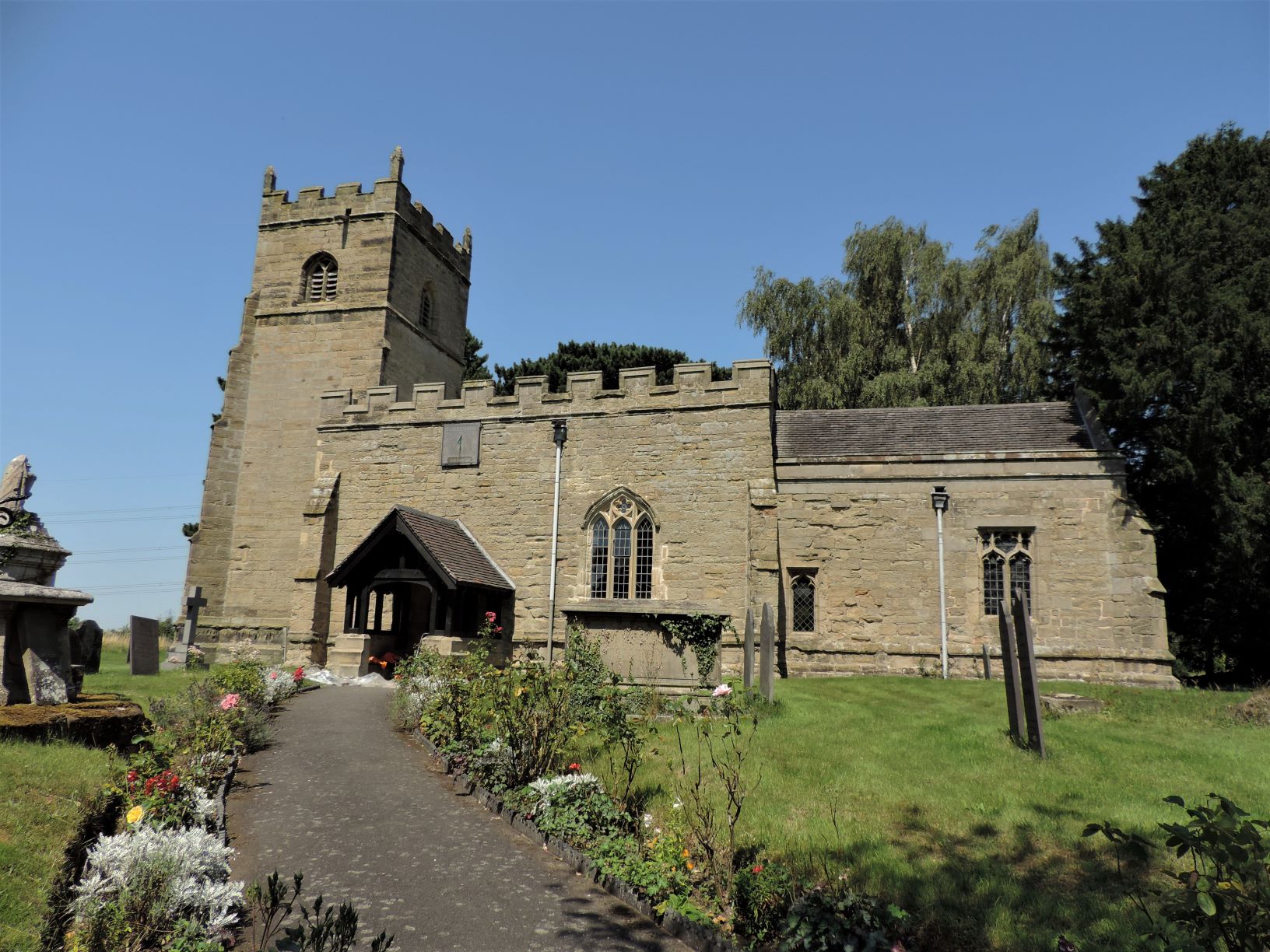
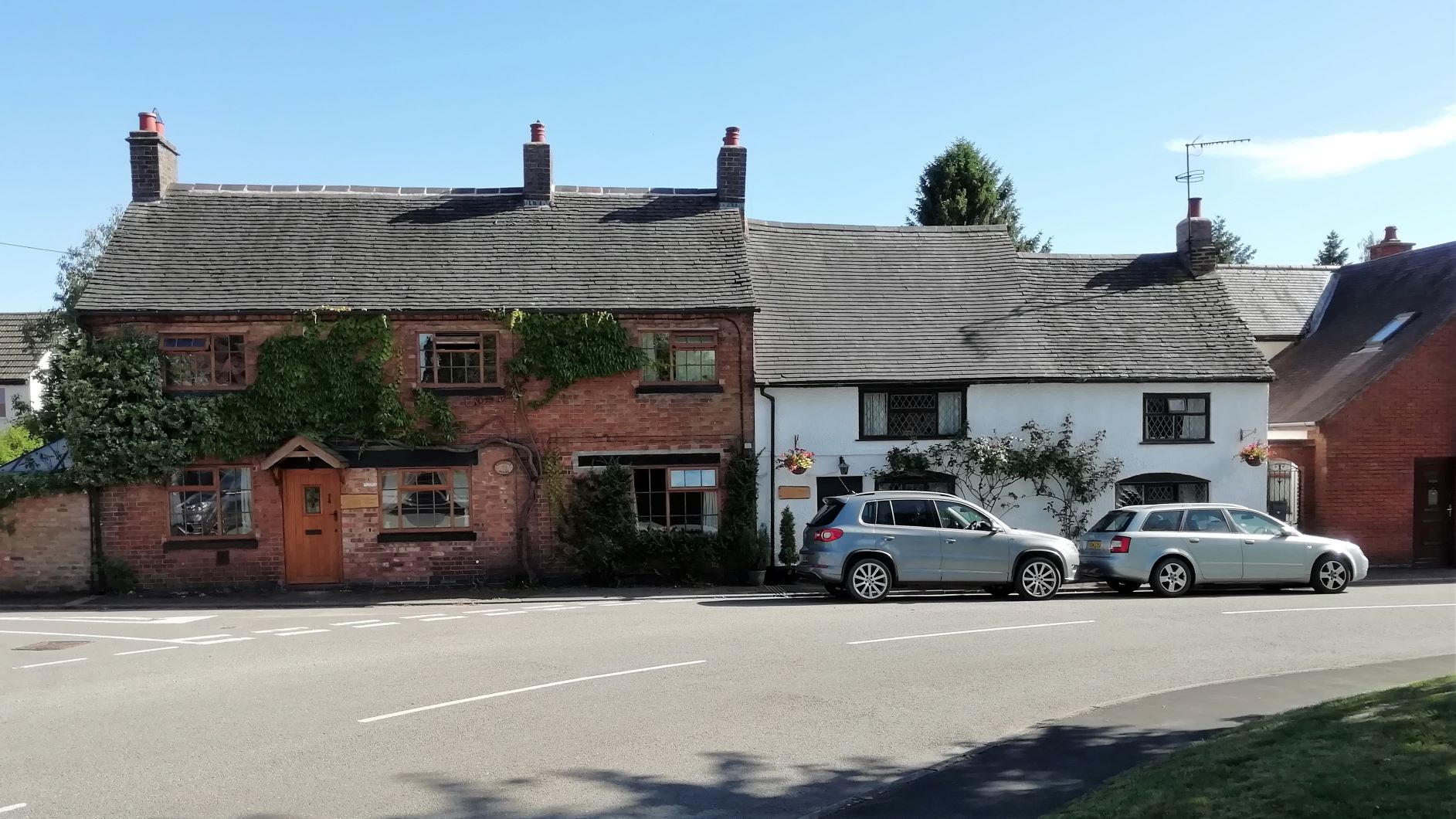
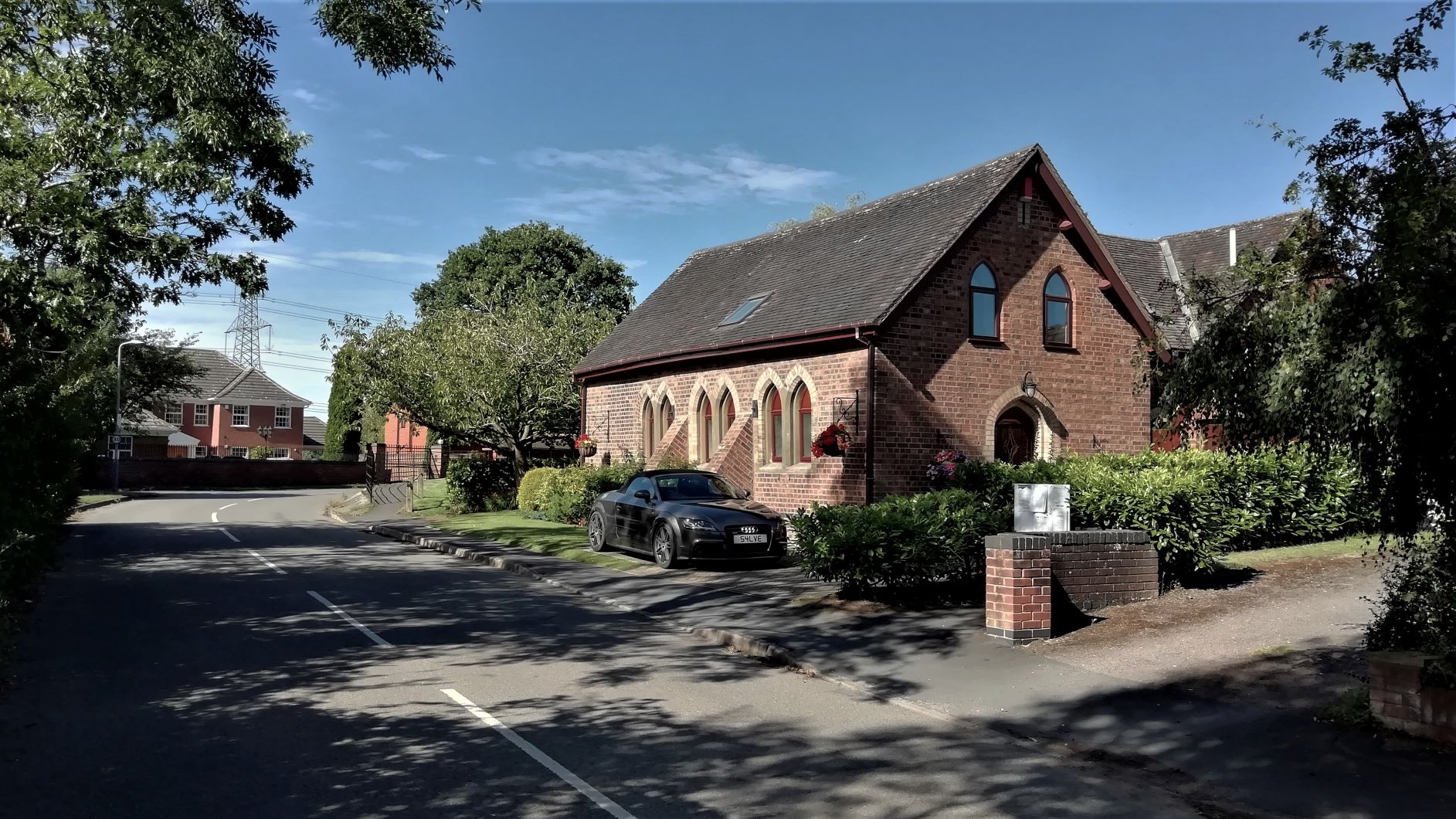
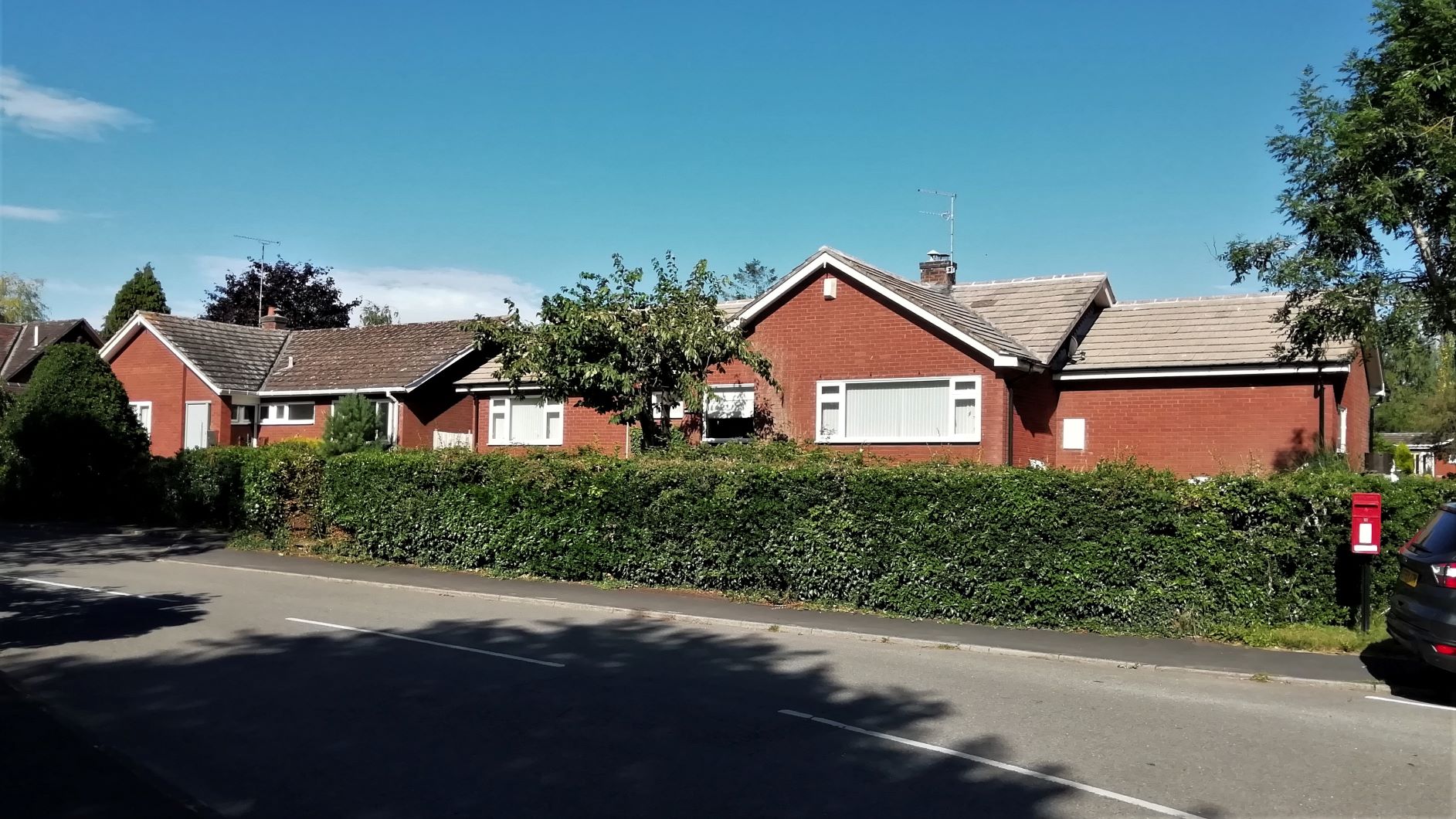
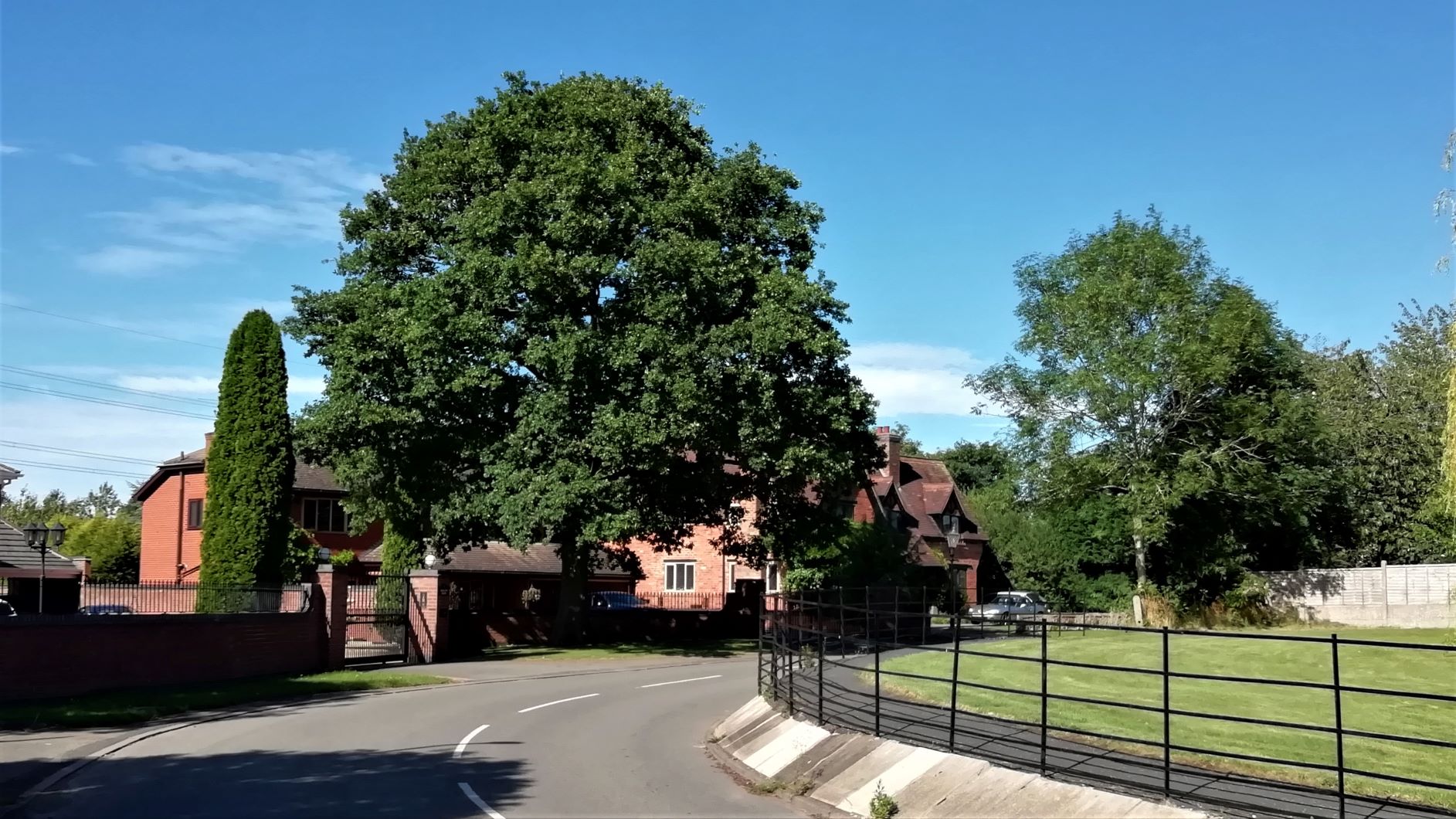
We found something in common with all of the places we visited, such as Stoke Golding, Market Bosworth and even Measham, whose origins are a little more industrial. All these places are kept remarkably spick and span. It is clear that the whole area is in the iron grip of a determined network of local officials ready and willing to step in and offer 'words of advice' to anyone who fails to uphold their standards. In Market Bosworth, for instance, they had invested heavily in the quin-centenary of the battle, deploying many cast iron waste bins marked '1485 to 1985' etc. all around the village. Thirty years later these are still standing, appear undamaged other than by exposure the weather and show no signs of graffiti.
Market
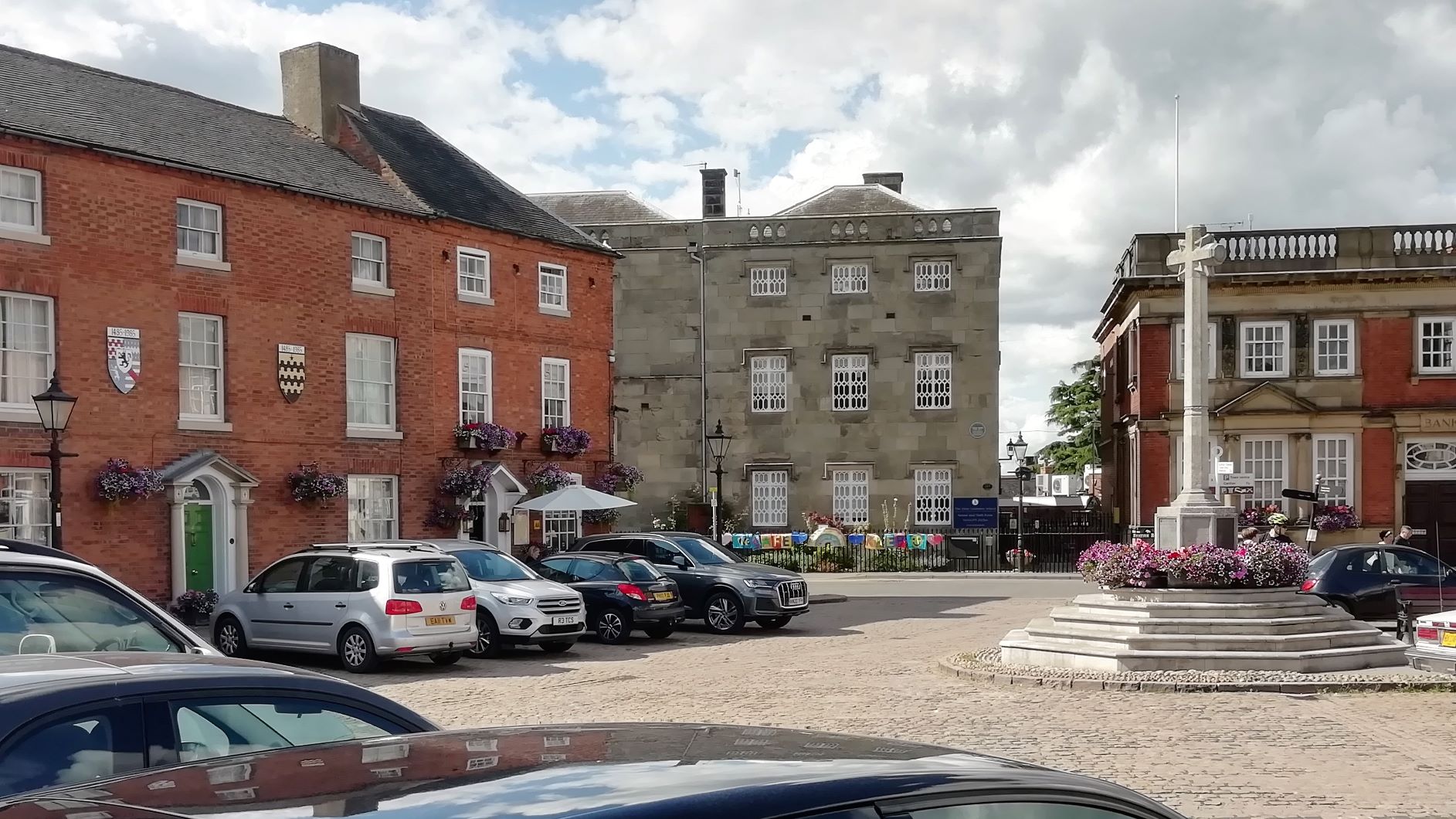
Bosworth
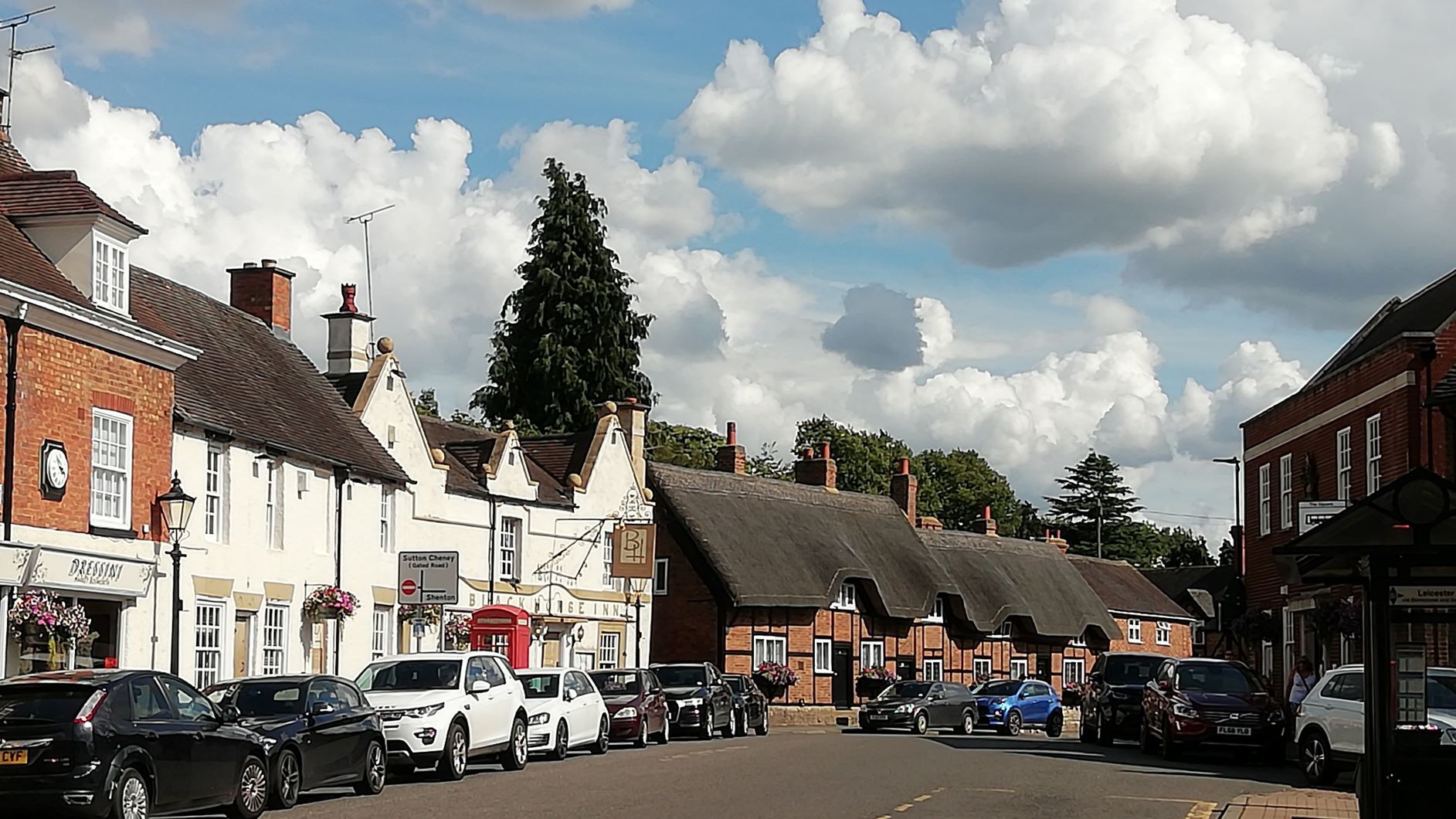
Based on the small sample we attempted, the same care and attention is not lavished on the upkeep of local footpaths and rights of way. Two or three planned walks fell foul of careless ploughing and planting, obliterating any visible signs of the path, blocking the route with shoulder high crops and even removing the stiles forcing walkers to scramble over fences and gates. A real shame but given more time one would probably soon get to know where the paths were intact and the map shows quite a good network.
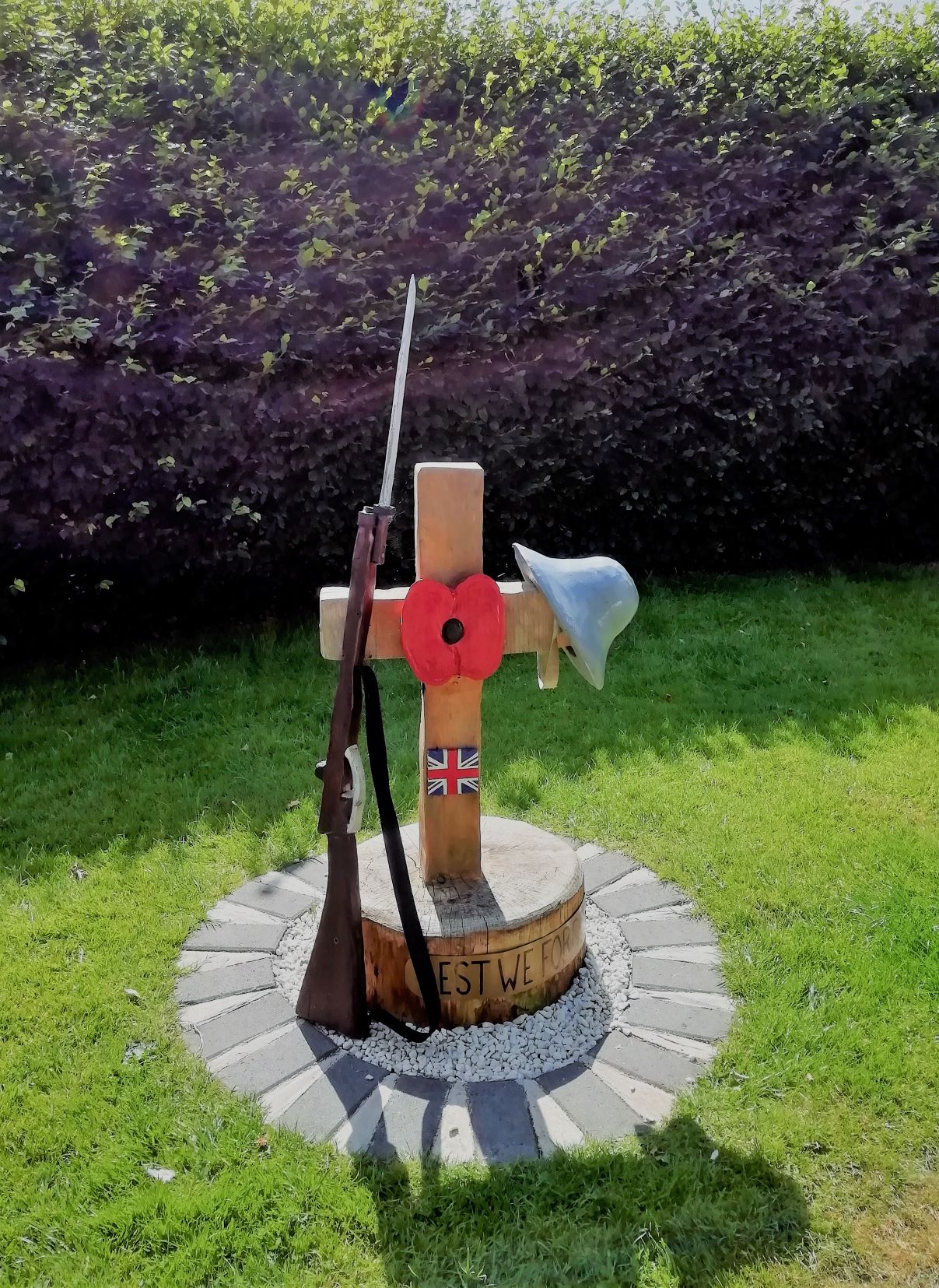
Troublesome Topcoats
Another reason why we had chosen to stay closer to home this summer was to be able to work with Aintree Boats on getting the paintwork sorted out. Regular readers may recall that some time before Christmas we discovered small pinheads in the paintwork all over the boat.
Initially it was suggested that this would cure itself but nonetheless there was an immediate commitment that, if it didn't, they would re-do the top coats. Looking at further photos in the Spring Aintree decided it was a specific issue and they would arrange the repaint. When lockdown came in March we had just agreed that they would find a Dry or Wet Dock close to us in which they could do the work. Once the pandemic restrictions eased and they were fully back to work they set about the search.
First they were going to do it at Calcutt Boats, where we have a mooring for the summer now. Then, because they could not have their wet dock for as long as they might need to, they arranged to do it at Crick Marina. When we left home they had said it was booked for 14th September but would ring us to confirm. After a couple of chase ups we suddenly got a call just as we were entering Hillmorton Top Lock. This was to say that they hadn't been able to get anywhere, even Crick, where they could keep the dock into a second week if they needed to. What they had decided now was to pick the boat up by road and take it back to Aintree for re-painting and to do that as soon as possible. We had a brief discussion about possible places to get the boat taken out of the water and they went off to make some arrangements and give us a call back.
Just over a week later, not having heard anything more of course, we got through to Aintree again to hear that they have booked the crane at Whilton Marina for 21st August and we should assume the boat would be gone for two weeks. We should remove breakables and valuables but leave everything else. They would re-do the top coats, the gunwales and the blacking, effectively returning the boat looking like new. What could possibly go wrong?
For us that meant that we would have to get stuff out of the boat and store it at home. We would then need to get the boat to Whilton Marina, the other side of Daventry and be able to get home from there once the boat had left. Practically, that meant that we would need to go back via Braunston Turn to Calcutt Boats, where we had left our car and we had a mooring, spend a couple of days at home getting things sorted, then cruise back up to Braunston Turn and head down to Whilton for 21st August, this time leap-frogging the car so we would have transport once we got there. While it all seemed a bit complicated, time-wise it was entirely doable, with a few days in hand. So, another schedule to have to stick to.
Return Trip
We reached the end of the line on Tuesday 3rd August. There is a shop and welcome station there, as well as full services, room to turn the boat and visitor moorings. The people there were lovely, passionate about the restoration and very helpful. We turned first, reversed back through the swing bridge onto the moorings and tied up. We had some trouble working out a good way to do this because of the position of the bollards and the impenetrability of the ground for a mooring pin. A guy who is moored there permanently stopped us working too hard by letting us know that the bollards are in the wrong place for virtually everyone and the best we could do would be to secure the lines a very long way from the bow and stern respectively, which would normally leave us to be swung about by every passing boat. Of course, here, at the terminus, passing traffic was not something we would need to worry too much about.
Laundry continued to loom large in our planning. We had managed to get a company in Hinckley to collect a load from us in Market Bosworth and had to let them know when to deliver it back as we passed through Hinckley on our way down. Having had an agonising time getting the service department to take down the post code of The Greyhound at Hawkesbury Junction, Sue really wanted to be back there for Friday rather than change the meeting point. That meant we would go back a lot more quickly than we came up but still not in a mad rush. For good measure she rang them again before we left Snarestone to confirm they had the right post code. They didn't. They were still using our house address. Sue gave them the post code of The Greyhound again and they promised that is where they would send the engineer.
We stopped at Market Bosworth again for lunch but then carried on as far as the Battlefield Heritage Centre and moored up out in the country on our own. The next morning we headed down to Hinckley and found a central location there so that we could get the laundry delivered. That went very smoothly. As there was a Sainsbury's and a Tesco in Hinckley, more or less in the same place, we stayed there and did some main weekly shopping. Not as simple as it is with a car. The twenty-five minute walk there was not so bad, the twenty-five minutes back carrying heavy shopping bags in each hand was no fun at all. Still, as we were moored in a town now, we were able to make a virtue out of necessity by treating ourselves to an Indian takeaway from the shop up the road. While waiting for the meal to be prepared I went into the pub next door. I booked in using their app, ordered a pint and sat down to wait for the new table service. It was rather a shock to hear the barmaid say to the waitress: "That's a pint of San Miguel for the old boy over there". It's certainly the first time I've heard myself described in those terms, other than in jest. As far as I am concerned I am still about twenty-five!
On Thursday we got going back down to the junction and I walked Bracken most of the way there. On the way past Bridge 6 at Bramcote, where we had moored on the way up, we bumped into the guy who had been moored in front of us then, still there a week later. We didn't literally bump into him and it turned out that was a good thing as he had not been well. When we had met him before we had been on our respective boats and on this occasion he kept a good distance away from us as we talked. We had seen him as we left and he mentioned he wasn't feeling that great. Apparently, he had later called the NHS and he was really impressed that they had come out to him and then kept in touch by phone afterwards to make sure he was doing OK. He had had the virus and while it had laid him low it seems his illness was quite mild compared to some, so the advice had been that he was better off on his boat than in a hospital. It certainly brought home some of the issues for his lifestyle. He was alone on the boat and when he realised he was really sick he literally couldn't get off it. Getting some medical help had been possible by phone but there are plenty of places where there is no phone signal at all. As for more mundane issues, such as getting bread and milk, there was no-one to help him and he was miles from the nearest shop or services. By now he was more or less recovered and able to get out and about again so hopefully he will be OK.
Soon after that encounter we met up with Sue on the boat and went through Marston Junction, an interesting exercise simply because, as you leave the Ashby Canal, you are angled sharply away from your route back to Hawkesbury Junction. Fortunately the channel at the junction is quite wide and you can work yourself round to point the other way although, even at fifty nine feet, we were almost nose into the opposite bank before being able to clear the stern to turn. Once you finish a thirty seven point turn the boat is firmly on the offside of the Coventry Canal and completely unsighted for whatever might be coming up through the bridge that sits right before the junction and obscured by overgrown foliage. This is where the forward lookout really earns her salt!
We met with no disaster and were moored up back near The Greyhound for a late lunch and ready for our meeting with washing machine repair man the next day.

